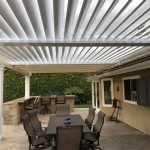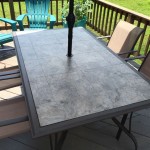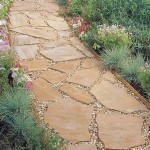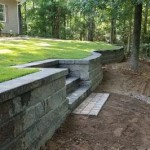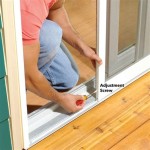Creating a DIY Gravel Patio: A Step-by-Step Guide
A gravel patio offers a beautiful and practical addition to any outdoor space. It's a versatile surface that can be used for dining, lounging, or simply enjoying the fresh air. The best part? Building your own gravel patio is a DIY project that's within reach of most homeowners. This guide will walk you through the steps involved, from planning to completion.
1. Planning and Preparation: Laying the Foundation for Success
Before you break ground, it's essential to carefully plan your gravel patio. Begin by considering the size and shape you desire, taking into account the existing landscape features and the overall aesthetic of your yard.
Determine the area you'll dedicate to the patio and mark it clearly using stakes and string. Remove any existing vegetation and debris. Measure the area to determine the amount of gravel you'll need. A good rule of thumb is to estimate around 4 inches of depth for the gravel layer.
Next, consider adding a layer of landscape fabric or weed barrier beneath the gravel. This will help prevent weeds from pushing through and keep the gravel from sinking into the soil. Check with local building codes to see if you need a building permit for your project.
2. Setting Up the Base: Creating a Stable Foundation
A sturdy foundation is key to ensure your gravel patio remains level and stable over time. The first step is to excavate the area to the desired depth, typically 6-8 inches, to accommodate the gravel and any base layers you choose.
For added stability, consider adding a layer of compacted gravel or crushed stone as the base. This acts as a drainage layer and helps distribute weight evenly. Use a tamper or a plate compactor to compact the base thoroughly, ensuring a solid foundation for the gravel layer.
To ensure the patio is level, use a level and a garden hose to create reference lines. Adjust the base layer as needed to achieve the desired slope for drainage.
3. Installing the Gravel: The Finishing Touch
With the base prepared, you're ready to install the gravel. Choose a gravel type that complements the existing aesthetic of your landscape. There are various sizes and colors to choose from, each with its own unique look and feel.
Spread the gravel evenly over the prepared base, ensuring a consistent depth. It is recommended to use a wheelbarrow and a shovel for this task, but you can also use a gravel spreader for a quicker and more even application.
After placing the gravel, use a rake to smooth out the surface and remove any excess gravel. You may want to consider adding a layer of pea gravel or decorative stones on the surface for a cleaner aesthetic.
4. Maintaining Your Gravel Patio: Keep It Looking Its Best
While gravel patios are relatively low maintenance, they still require some attention to stay in top condition. Regularly sweep the surface to remove leaves, debris, or other materials that may accumulate.
To prevent weeds, consider adding a layer of landscape fabric or weed barrier beneath the gravel. It's also a good idea to periodically top off the gravel layer, as it may settle over time.
If you see any signs of erosion or unevenness, use a rake to distribute the gravel evenly. For significant repairs, you may need to remove and replace sections of gravel.
In colder climates, consider using a snow shovel or a leaf blower to clear snow and ice from your gravel patio during winter.

Redeeming Hampton Diy Pea Gravel Patio For Under 200

Create A Diy Pea Gravel Patio The Easy Way City Farmhouse By Jennifer O Brien

Pea Gravel Patio Diy

Diy Crushed Pea Gravel Patio Install

Diy Pea Gravel Patio Tour Pine And Prospect Home

50 Best Gravel Patio Ideas Diy Design S Hardscape Small Backyard Landscaping Garden

Diy Pea Gravel Patio Tour Pine And Prospect Home

Diy Pea Gravel Patio

Diy Pea Gravel Patio With Pavers Love Renovations

How To Build A Pea Gravel Patio Farmhouse On Boone

